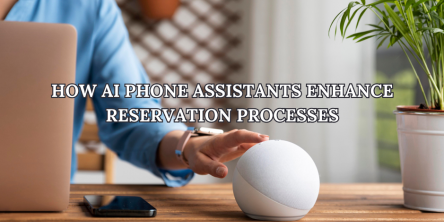Cloud Adoption - Challenges and Solutions

Embarking on the transformative journey into the cloud is a strategic imperative for modern enterprises. It promises unprecedented agility, scalability, and innovation. However, this migration is not without its hurdles.
In this blog, I’ll take a deep dive into the complex terrain of cloud adoption, unveiling the top challenges organizations encounter. From navigating intricate data sovereignty regulations to fortifying digital fortresses against security threats, each challenge is a stepping stone toward a more resilient and technologically advanced future.
Challenges In Implementing Cloud Adoption And Steps To Overcome These Challenges
1. Data sovereignty regulations: Data residency and compliance with local regulations pose significant challenges, with varying laws governing the storage and processing of data in different regions. Overcoming this challenge requires a meticulous understanding of legal frameworks and strategic data placement to comply with data sovereignty regulations without compromising operational efficiency.
Steps to overcome the challenge;
- Understanding local law - Companies should be aware of the data sovereignty regulations in each country.
- Rigorous strategic planning - Companies should develop a clear data storage and management strategy considering various data sovereignty regulations.
- Implementing cybersecurity measures - Companies should implement robust cybersecurity measures to protect their data from unauthorized access or theft.
- Maintaining regulatory documentation and developments - Companies should keep up-to-date with changes in data sovereignty regulations and maintain documentation to demonstrate compliance.
- Best practices - Companies should follow best practices for data sovereignty, such as encrypting data and using secure data storage solutions.
2. Vendor lock-in: This deals with the company becoming too dependent on one cloud provider, which can lead to a lack of flexibility and increased costs.
Steps to overcome the challenge:
- Developing a clear strategy - Companies should establish a clear strategy for cloud adoption, considering the various challenges and risks associated with vendor lock-in.
- Negotiating contracts - Companies should negotiate contracts with cloud providers that include data portability and interoperability provisions.
- Using open standards - Companies should use open standards for their data and applications to ensure they can be easily moved between cloud providers.
- Monitoring performance - Companies should monitor the performance of their cloud providers to ensure that they are meeting their service level agreements (SLAs) and providing the expected level of service.
3. Skill gap: It refers to the requirement that companies have regarding their employees to manage cloud infrastructure effectively and the current gap that the company employees have. This can lead to increased costs and a lack of flexibility for companies to execute the cloud adoption model effectively.
Steps to overcome the challenge:
- Identifying skills gaps - Companies should identify the skills gaps in their existing workforce and determine the necessary skills to manage cloud infrastructure effectively.
- Training- Companies should train their employees to ensure they have the necessary skills to manage cloud infrastructure.
- Hiring new employees - Companies should hire new employees with the required skills to manage cloud infrastructure.
- Partnering with cloud vendors - Companies can partner with cloud vendors to provide training and support for their employees. Many cloud vendors, such as Amazon Web Services, Google, and IBM, offer training in cloud computing. AWS has an AWS Academy program.
4. Investments made in existing data centers: Legacy infrastructure investments can pose a challenge when transitioning to the cloud. Adopting a phased migration approach, optimizing existing resources, and embracing hybrid cloud solutions enable organizations to leverage their current investments while gradually transitioning to a cloud-centric model.
Steps to overcome the challenge:
- Developing a well-structured approach - Companies should establish a clear strategy for cloud adoption that considers the various challenges and risks associated with existing data center investments.
- Identifying workloads - Companies should identify the workloads best suited for the cloud and those that should remain on-premises.
- Choosing a hybrid cloud solution - Companies should choose one that meets their needs and requirements.
- Migrating workloads - Companies should gradually migrate workloads to the cloud, starting with non-critical workloads and moving to more critical ones over time.
- Investing in training - Companies should invest in training their employees to ensure they have the necessary skills to manage cloud infrastructure and work with hybrid cloud solutions.
Final Words
Cloud adoption can be a challenging process for organizations. By identifying the challenges of cloud adoption and taking the steps to overcome them, companies can take advantage of cloud computing. Companies can also use hybrid solutions, provide training to their employees, and partner with cloud vendors to overcome these challenges. By following these steps, companies can create an effective enterprise cloud strategy that aligns with their business objectives and maximizes the benefits of cloud adoption.
Similar Articles
What could be better than fuelling your vehicle right at your studio driveway before you start your early morning health routine or hustle for the day? And what if that fuel were clean, renewable power direct from your property's energy grid? As we navigate towards a future driven by electric vehicles (EVs), the convenience of home charging becomes more relevant than ever.
Discover how case management system software streamlines multidisciplinary coordination, enhancing efficiency and collaboration across teams.
Security testing has emerged as one of the most relevant procedures in the current computerized world, where software systems and networks are constantly threatened by hacking attempts. Regarding various security testing models, Penetration testing remains one of the most effective and vital testing techniques organisations today use to iron out their Security measures
Explore the crucial role of integration testing in software development to ensure seamless functionality and detect issues early in the process.
This article delves into how blockchain technology, a key player in this technological revolution, influences modern art, reshaping its landscape and opening new avenues for artists and collectors alike.
Discover the best lease accounting software for your business needs with our expert guide. Compare features, pricing, and make the right choice today!
Our world is constantly changing, and that much has been for everyone to see.
Steel church buildings offer a practical and efficient solution for congregations looking to build or expand their worship space. With customizable designs and a variety of sizes, steel constructions can accommodate the unique needs of different religious communities.
Discover how AI phone assistants revolutionize reservations! Explore streamlined booking processes & enhanced customer experiences. Dive in now!









